Related Research Articles
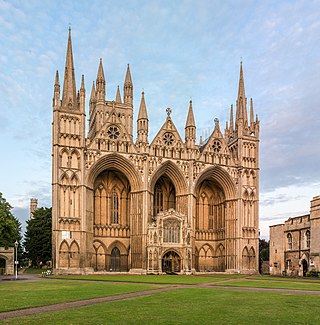
Peterborough Cathedral, properly the Cathedral Church of St Peter, St Paul and St Andrew – also known as Saint Peter's Cathedral in the United Kingdom – is the seat of the Anglican Bishop of Peterborough, dedicated to Saint Peter, Saint Paul and Saint Andrew, whose statues look down from the three high gables of the famous West Front. Although it was founded in the Anglo-Saxon period, its architecture is mainly Norman, following a rebuilding in the 12th century. With Durham and Ely cathedrals, it is one of the most important 12th-century buildings in England to have remained largely intact, despite extensions and restoration.

Joseph Hall was an English bishop, satirist and moralist. His contemporaries knew him as a devotional writer, and a high-profile controversialist of the early 1640s. In church politics, he tended in fact to a middle way.
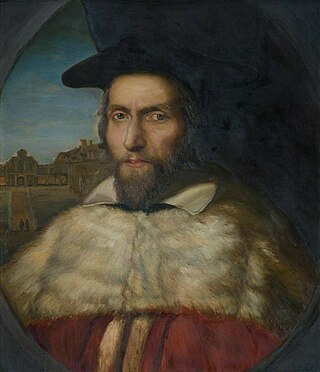
John Cosin was an English churchman.
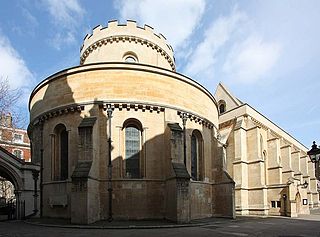
The Temple Church is a royal peculiar church in the City of London located between Fleet Street and the River Thames, built by the Knights Templar as their English headquarters. It was consecrated on 10 February 1185 by Patriarch Heraclius of Jerusalem. During the reign of King John (1199–1216) it served as the royal treasury, supported by the role of the Knights Templar as proto-international bankers. It is now jointly owned by the Inner Temple and Middle Temple Inns of Court, bases of the English legal profession. It is famous for being a round church, a common design feature for Knights Templar churches, and for its 13th- and 14th-century stone effigies. It was heavily damaged by German bombing during World War II and has since been greatly restored and rebuilt.
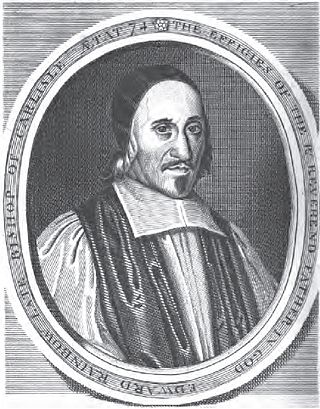
Edward Rainbowe or Rainbow (1608–1684) was an English academic, Church of England clergyman and a noted preacher. He was Master of Magdalene College, Cambridge, Vice-Chancellor of the University of Cambridge and Bishop of Carlisle.

Bishop Richard Corbet was an English clergyman who rose to be a bishop in the Church of England. He is also remembered as a humorist and as a poet, although his work was not published until after his death.
The Dean of the Chapel Royal, in any kingdom, can be the title of an official charged with oversight of that kingdom's chapel royal, the ecclesiastical establishment which is part of the royal household and ministers to it.
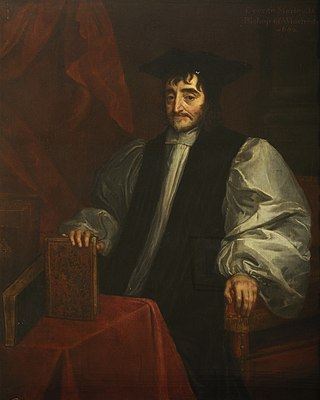
George Morley, was a senior member of the Church of England from London, who served as Bishop of Worcester from 1660 to 1662, and of Winchester from 1662 to 1684.

Cynesige was a medieval English Archbishop of York between 1051 and 1060. Prior to his appointment to York, he was a royal clerk and perhaps a monk at Peterborough. As archbishop, he built and adorned his cathedral as well as other churches, and was active in consecrating bishops. After his death in 1060, the bequests he had made to a monastery were confiscated by the queen.
William Barlow was an Anglican priest and courtier during the reign of James I of England. He served as Bishop of Rochester in 1605 and Bishop of Lincoln in the Church of England from 1608 until his death. He had also served the church as Rector of St Dunstan's, Stepney in Middlesex and of Orpington, in Kent. He was also Dean of Chester Cathedral, and secured prebends in Chiswick and Westminster.

Thomas Musgrave was Archbishop of York from 1847 to 1860.

The Bishop of Peterborough is the ordinary of the Church of England Diocese of Peterborough in the Province of Canterbury.
William Dansey (1792–1856), was a Church of England clergyman and author.
Richard Fletcher was a Church of England priest and bishop. He was successively Dean of Peterborough (1583–89), bishop of Bristol (1589–93), Bishop of Worcester (1593–95) and Bishop of London (1595–96).
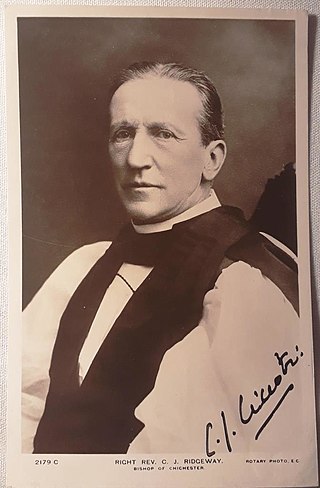
Charles John Ridgeway was an English churhman, the Bishop of Chichester from 1908 to 1919.
Claude Martin Blagden was an eminent Anglican bishop in the first half of the 20th century.

The Bishop of Bristol heads the Church of England Diocese of Bristol in the Province of Canterbury, in England.
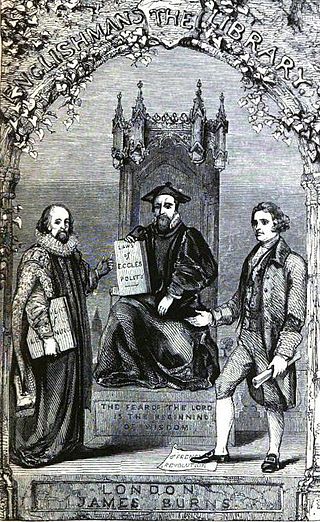
The Englishman's Library was an English book series of the 1840s, a venture of the publisher James Burns. It ran eventually to 31 volumes.
Gert Miltzow was a Norwegian clergyman, theologian and historical writer.
Thomas Wagstaffe the Elder was a clergyman of the Church of England, after the nonjuring schism a bishop of the breakaway church.
References
- ↑ King, Richard John (1881). Handbook to the Cathedrals of England: Eastern Division : with Illustrations. John Murray. p. 132.
- ↑ Joseph Henshaw, Richard Kidder (1841). Meditations miscellaenous, holy and humane. To which is added a 3rd pt. by R. Kidder. Oxford University.
- ↑ Kelly, James E.; Laugerud, Henning; Ryan, Salvador (22 September 2020). Northern European Reformations: Transnational Perspectives. Springer Nature. p. 338. ISBN 978-3-030-54458-4.